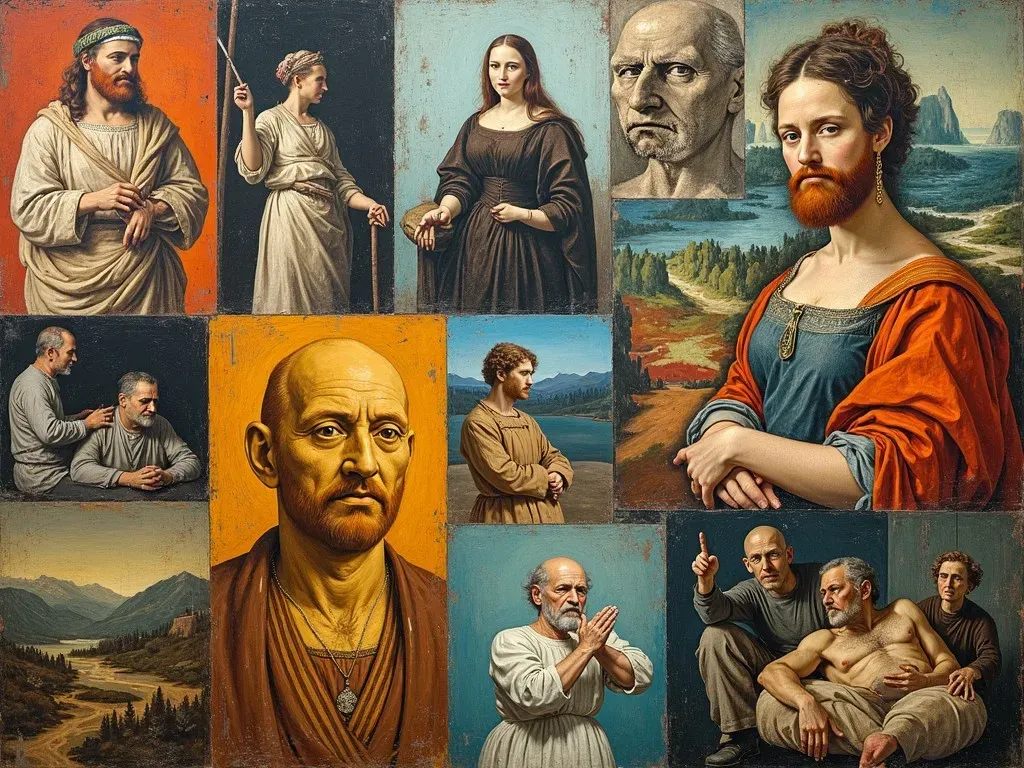The keyword “best artists ever” resonates with art enthusiasts and casual observers alike as it encapsulates a spectrum of creativity and mastery that spans centuries, cultures, and mediums. These artists have not only defined their art forms but have also left an indelible mark on the world, inspiring generations with their innovative approaches, emotional depths, and unapologetic expressions.
The Unforgettable Impact of Legendary Artists
Art serves as a reflection of society, capturing the essence of human experience, emotion, and thought. The best artists of all time, from Van Gogh to Picasso, have wielded their brushes to forge a path through the tumultuous landscapes of history, shaping our understanding of art itself.
The following table highlights some of the greatest artists of all time along with their notable contributions and signature styles:
| Artist | Notable Work | Style | Era |
|---|---|---|---|
| Leonardo da Vinci | Mona Lisa | High Renaissance | 1452–1519 |
| Vincent van Gogh | Starry Night | Post-Impressionism | 1853–1890 |
| Pablo Picasso | Guernica | Cubism | 1881–1973 |
| Frida Kahlo | The Two Fridas | Surrealism | 1907–1954 |
| Michelangelo | The Creation of Adam | High Renaissance | 1475–1564 |
| Andy Warhol | Marilyn Diptych | Pop Art | 1928–1987 |
| Jackson Pollock | No. 5, 1948 | Abstract Expressionism | 1912–1956 |
Iconic Contributions to Art
The greatest artists share a penchant for not just creating but reshaping the very essence of their art forms.
- Leonardo da Vinci revolutionized portrait painting with his Techniques in realism and perspective, especially visible in the enigmatic smile of the Mona Lisa.
- Vincent van Gogh, despite his troubled life, influenced the art world with bold colors and emotional depth, allowing viewers to connect personally with the canvas.
- Pablo Picasso, one of the most prolific artists, pushed the boundaries of perspective in art with his groundbreaking contributions to the Cubism movement, emphasizing multiple viewpoints within a single frame.
Each of these artists has contributed significantly to how we appreciate and understand visual narratives, forming a foundation for countless successors.
The Influence of Music in Art
The intersection of visual art and music creates an exciting dialogue that enriches both forms. Some of the best musical artists, too, have cemented their legacies, often drawing on the broader artistic movements of their times. The list of musical legends echoes the sentiments expressed through visual art, from the poetic lyricism of Bob Dylan to the rhythmic innovations of Miles Davis.
According to a survey by Rolling Stone, the top three musical icons are:
- The Beatles – Revolutionized popular music and culture in the 1960s.
- Bob Dylan – Known for his profound lyrics and impact on music and culture.
- Elvis Presley – The King of Rock and Roll, whose influence transcends genres.
Link to Rolling Stone’s 100 Greatest Artists List
How Cultural Movements Shape Artists
Art does not exist in a vacuum; it is deeply intertwined with the cultural and political context of its time. For instance, Frida Kahlo’s art is often discussed in terms of identity and feminism, drawing from her personal experiences and cultural heritage.
In addition, art movements like Surrealism and Dadaism emerged as responses to the chaos of the world, particularly in relation to war and existential crises. The subconscious became a medium in itself, bringing forward artists such as Salvador Dalí and Marcel Duchamp, who challenged the norms of their time.
Comparisons Between Visual Artists and Musicians
Many argue that visual artists and musicians operate in parallel universes, crafting their respective realms through sound and sight. Here’s how they often compare in impact and style:
| Aspect | Visual Artists | Musical Artists |
|---|---|---|
| Medium | Paint, sculpture, mixed media | Vocal, instrumental |
| Impact | Influences on design and aesthetics | Cultural revolutions and identity |
| Techniques | Textural manipulation, color theory | Composition, lyricism, rhythm |
| Emotional Engagement | Visual storytelling | Auditory storytelling |
Frequently Asked Questions
Who is considered the best artist of all time?
The title of the best artist often varies by personal opinion, but many believe that Leonardo da Vinci holds this title due to his incredible versatility and mastery in multiple disciplines like painting, drawing, and inventions.
What defines a “great” artist?
A great artist is defined by their technical skill, originality, influence on their respective fields, and their ability to evoke emotional or intellectual responses from their audience.
How do historical contexts influence artists?
Historical contexts shape the themes, styles, and subjects that artists explore. Political movements, wars, and cultural shifts play a significant role in what artists create and how their work is received.
Are contemporary artists included in the discussion of the best artists ever?
Absolutely! Contemporary artists like Banksy and Yayoi Kusama are frequently included in discussions of great artists due to their innovative approaches and significant impacts on modern art.
Final Thoughts on Artistic Legacy
Through our exploration of the best artists ever, we can see a rich tapestry of creativity that informs not just the art world but society at large. Each artist represents a fragment of history, a specific cultural moment embedded in their work.
From classical masters to modern visionaries, the dialogue between art and the human experience continues to evolve, ensure the legacy of these artists resonates through the ages.
For further reading on Notable Artists and their revolutionary impacts, you can check out Timeout’s list of the Most Famous Artists of All Time.
